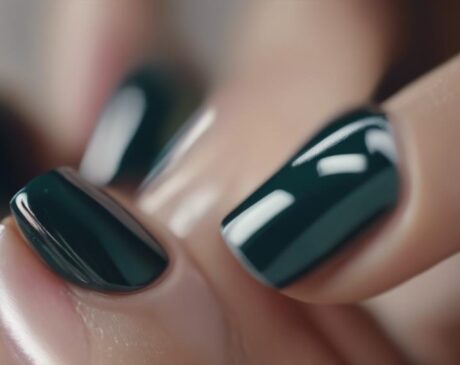Can You Use Gel Instead of Glue for Press on Nails?
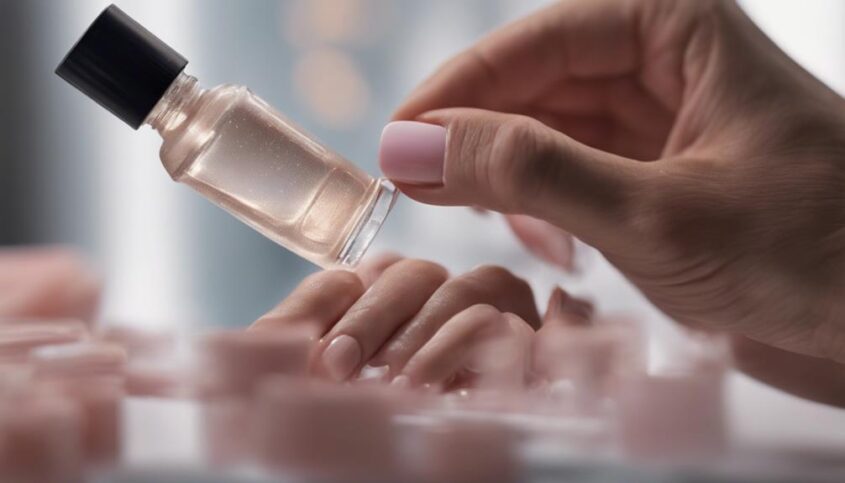
When opting between gel and glue for press-on nails, choose wisely. Gel offers a resilient hold lasting weeks, perfect for durability seekers. Glue provides a quick bond but might need frequent touch-ups. Opt for gel if seeking a glossy finish and lasting strength. If you desire a gentle removal process and nail health safety, gel is preferable. To ensure flawless application, prep nails, use thin layers, and follow curing instructions diligently. Explore the subtle nuances between gel and glue to master press-on nails like a pro!
Key Takeaways
- Gel can be used instead of glue for press-on nails.
- Gel provides a durable and long-lasting hold.
- Gel offers a safer and gentler removal process.
- Gel enhances the overall appearance of press-on nails.
- Gel requires precision but maintains nail health better than glue.
Gel Vs Glue: Key Differences
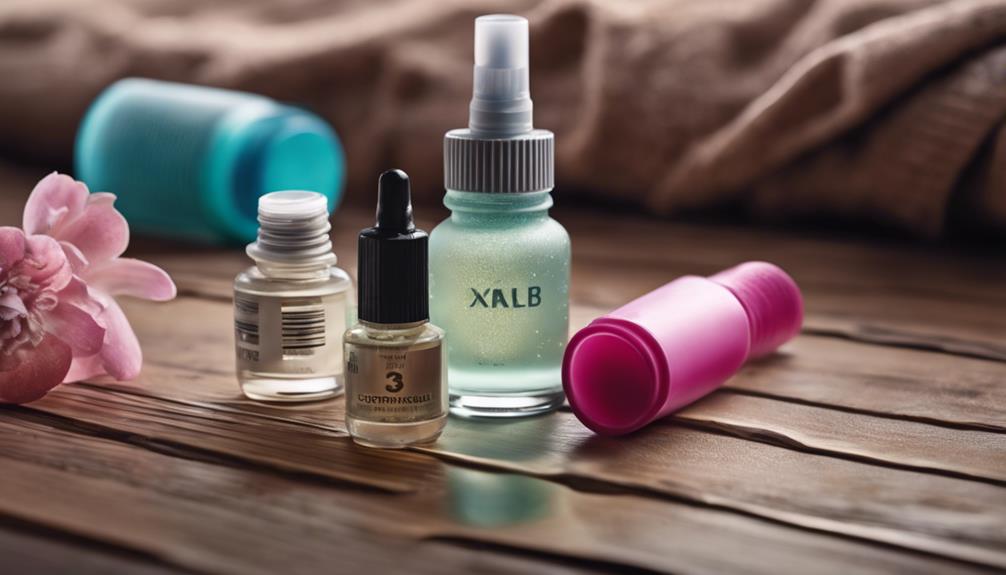
When comparing gel to glue for press-on nails, the key differences lie in their application process and longevity. Gel nail application involves a more advanced technique that requires curing under a UV or LED lamp, providing a durable and long-lasting hold. On the other hand, glue is a quicker and easier application method, but it may not offer the same level of longevity as gel.
In terms of innovation, gel nails are at the forefront of nail technology, offering a customizable and versatile option for nail enthusiasts. Gel nails provide a glossy finish that can last up to several weeks without chipping or peeling, making them a popular choice for those seeking a long-lasting manicure.
Glue, while simpler to apply, may need more frequent touch-ups due to its adhesive properties. However, it still remains a reliable option for those looking for a quick and easy nail enhancement solution. Ultimately, the choice between gel and glue for press-on nails depends on individual preferences for application techniques and desired longevity.
Application Techniques Comparison
When considering the application techniques for press-on nails, comparing the adhesion of gel versus glue is crucial. Additionally, assessing the durability of each technique and understanding the differences in the removal process are important factors to consider. By exploring these points, individuals can make informed decisions on which application technique suits their needs best.
Gel Vs Glue Adhesion
In comparing the application techniques of gel adhesion versus glue adhesion for press-on nails, it is essential to consider their respective strengths and limitations. Gel adhesion offers a more flexible and customizable application process, allowing for adjustments before curing under a UV lamp. On the other hand, glue adhesion provides a quick and strong bond, ideal for those seeking a fast and reliable application. Below is a comparison table highlighting key differences between gel and glue adhesion techniques:
| Adhesion Technique | Strengths | Limitations |
|---|---|---|
| Gel | Flexible, customizable | Requires UV lamp for curing |
| Glue | Quick, strong bond | Limited time for adjustments |
Durability Comparison
Comparing the durability of gel and glue adhesion techniques for press-on nails reveals key differences in their longevity and resilience. Gel adhesion tends to offer a more durable and long-lasting hold compared to traditional glue. The innovative application process of gel allows for a stronger bond that can withstand daily activities, such as typing, washing dishes, or other tasks that may put pressure on the nails. Gel also provides added flexibility, reducing the chances of the nails popping off or breaking. In contrast, glue adhesion may require more frequent touch-ups and replacements due to its tendency to weaken over time. For those seeking a more resilient and enduring nail enhancement solution, opting for gel adhesion could be the innovative choice for long-lasting wear.
Removal Process Differences
Gel adhesion and glue adhesion techniques for press-on nails exhibit notable distinctions in their removal processes, particularly in their application techniques. When it comes to removing press-on nails applied with gel, the process often involves soaking the nails in acetone to break down the gel bond gently. This method can take a bit longer compared to the quicker removal of glue-adhered nails using acetone or a nail polish remover. The gel adhesion technique provides a more flexible and durable bond, making it slightly more time-consuming to remove. However, the advantages of a longer-lasting and sturdier nail application may outweigh the extra effort required during removal for those seeking a more resilient and lasting nail enhancement solution.
Longevity and Durability Factors
Ensuring the longevity and durability of press-on nails when using gel requires meticulous application and proper maintenance. Gel provides a strong bond that can enhance the lifespan of press-on nails compared to traditional glue. When applying gel to adhere press-on nails, it is essential to ensure that each nail is securely attached, with no gaps or air bubbles that could compromise the bond. Additionally, curing the gel properly with a UV or LED lamp is crucial for maximum durability.
To further enhance the longevity of press-on nails with gel, it is recommended to avoid exposing them to harsh chemicals and excessive water. Wearing gloves while cleaning or doing chores can prevent premature lifting or damage to the nails. Regularly moisturizing the cuticles and nail beds can also help maintain the integrity of the gel bond.
Removal Process Comparison
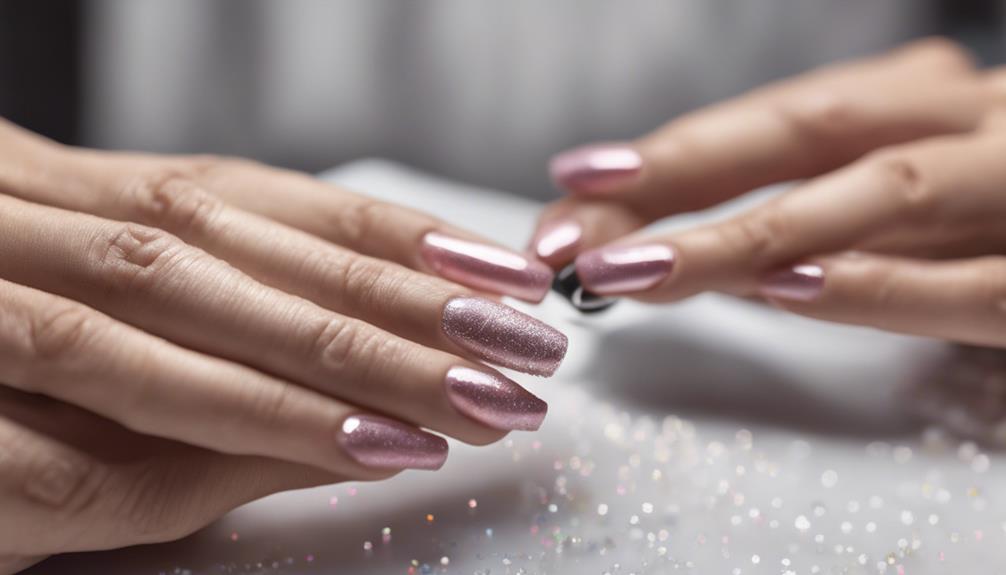
When it comes to removing press-on nails, comparing the processes for gel and glue removal is essential. Understanding the differences in the removal techniques can help determine which method is more convenient and suitable for individual preferences. Factors such as ease of removal and potential damage to natural nails should be considered when deciding between gel and glue removal for press-on nails.
Gel Vs Glue Removal
For the removal of press on nails, the process of eliminating gel and glue differs in terms of effectiveness and ease. When it comes to gel removal, the process typically involves soaking the nails in acetone to break down the gel polish. This method can take longer and may require more effort to fully remove the gel. On the other hand, glue removal is often quicker and more straightforward. Glue can be dissolved with acetone or gently pried off without the need for soaking. In terms of innovation, some newer gel nail systems offer quicker removal processes, such as peel-off gels, which provide a more convenient option compared to traditional gel removal methods.
Ease of Removal
Achieving effortless removal of press on nails can significantly impact the overall user experience and maintenance process. When comparing the ease of removal between gel and glue for press on nails, several factors come into play:
- Residue: Gel polish typically leaves less residue than glue, making the removal process cleaner and quicker.
- Time: Gel removal often requires less time and effort compared to glue, allowing for a more efficient nail maintenance routine.
- Damage: Gel removal is generally gentler on the natural nails, minimizing the risk of damage during the removal process.
Considering these factors, using gel for press on nails may offer a smoother and more user-friendly removal experience.
Nail Health Considerations
Taking into account nail health considerations is essential when using gel for press on nails. While gel can provide a strong and long-lasting bond for press on nails, improper application or removal can potentially damage the natural nails underneath. To maintain optimal nail health, it is crucial to ensure that the gel is applied correctly and that proper removal techniques are followed.
When applying gel for press on nails, it is important to start with clean and dry nails to prevent any bacteria or fungi from getting trapped underneath the gel. Additionally, using a reputable gel product specifically designed for press on nails can help minimize the risk of adverse reactions.
Moreover, when it comes to removing gel from press on nails, it is recommended to use gentle techniques to prevent unnecessary stress on the natural nails. Avoid peeling or forcefully pulling off the gel, as this can lead to nail thinning or breakage. Instead, consider soaking the nails in acetone or using gel-safe nail wraps to facilitate a safer and more gentle removal process. By prioritizing nail health considerations, you can enjoy the benefits of gel for press on nails without compromising the integrity of your natural nails.
Expert Tips for Flawless Results
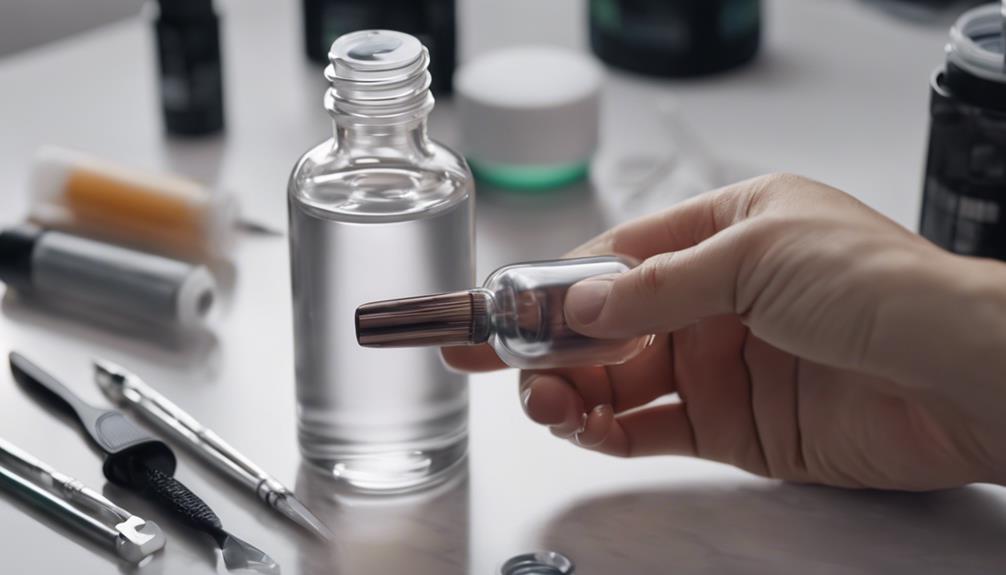
Implementing advanced techniques can enhance the precision and longevity of gel application for flawless results on press on nails. To achieve a professional finish, consider the following expert tips:
- Prep Your Nails: Begin by cleaning your nails thoroughly to remove any oils or residue. Use a gentle nail buffer to create a smooth surface for better adhesion.
- Apply Thin Layers: When applying gel to your press on nails, remember that thin layers are key. Building up the gel with multiple thin coats will result in a more natural and durable finish.
- Cure Properly: Ensure that you cure each layer of gel properly using a UV or LED lamp. Follow the manufacturer's instructions for the correct curing time to guarantee a strong bond and prevent any issues with peeling or chipping.
Frequently Asked Questions
Can Gel and Glue Be Used Interchangeably for Press on Nails?
Gel and glue serve distinct purposes in nail application. While both adhere press-on nails, gel typically offers stronger and longer-lasting hold due to its formula. It's advisable to follow manufacturer recommendations for optimal results.
Are There Any Specific Nail Types That Are Better Suited for Gel or Glue Application?
Different nail types have varying compatibility with gel or glue applications. Gel is ideal for flexible, natural nails as it provides longevity and strength. Glue works better for artificial or acrylic nails due to its quick-drying and sturdy bond.
Can Gel or Glue Cause Damage to Natural Nails Over Time?
Using various nail adhesives, such as gel or glue, may potentially lead to gradual wear and tear on natural nails over time. It's essential to practice proper application techniques and give nails breaks to maintain their health.
What Are Some Common Mistakes to Avoid When Using Gel or Glue for Press on Nails?
To achieve optimal results when using gel or glue for press-on nails, it is crucial to avoid common mistakes such as applying too much product, not allowing proper drying time, neglecting cuticle care, and skipping a base coat for protection.
Are There Any Alternative Methods for Applying Press on Nails Besides Using Gel or Glue?
Alternative methods for applying press-on nails include double-sided adhesive tabs, nail stickers, and nail wraps. These options offer quick and easy application without the need for gel or glue. They provide a convenient and temporary solution for nail enhancement.

